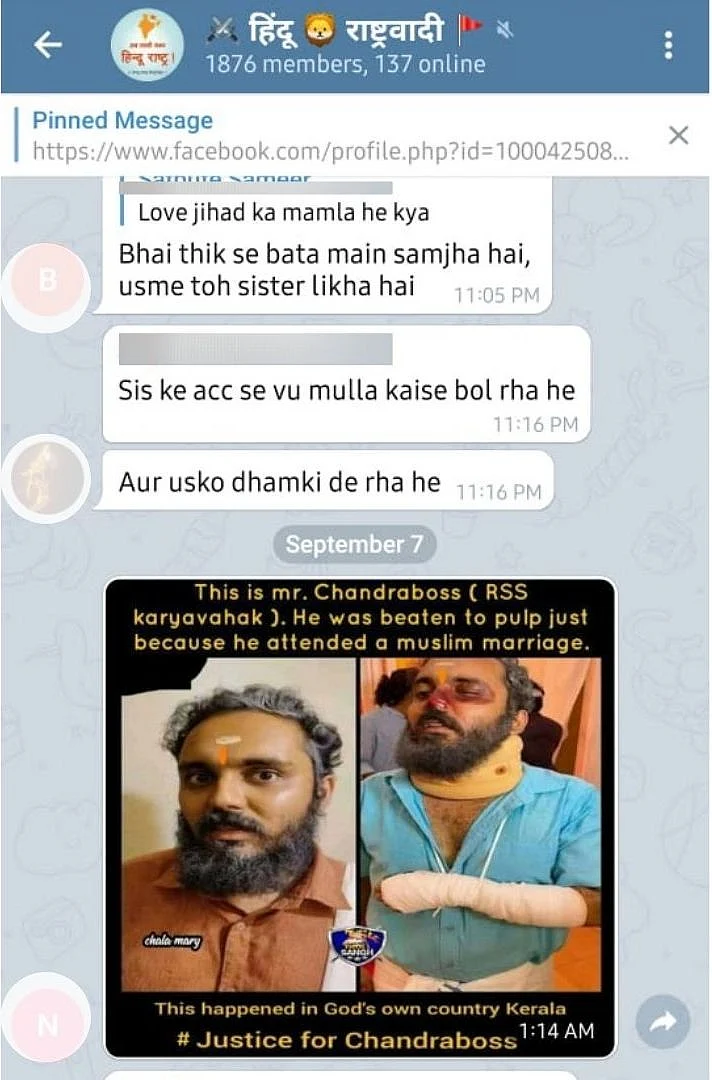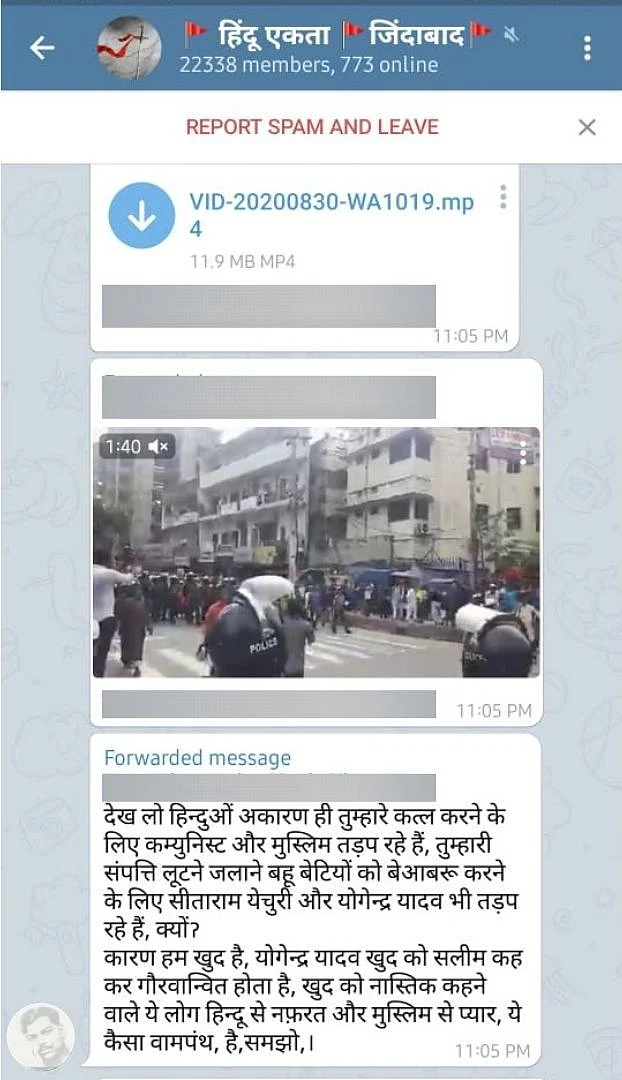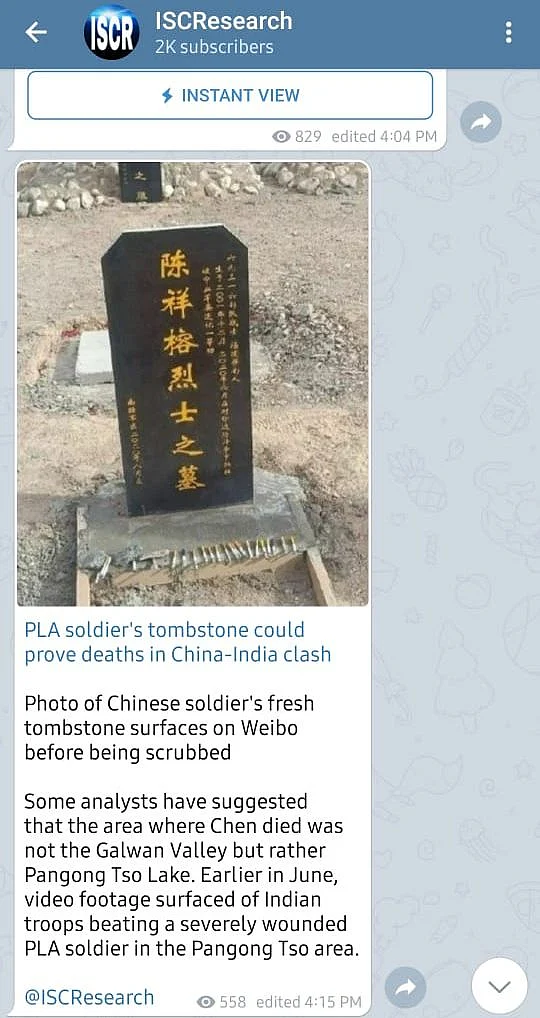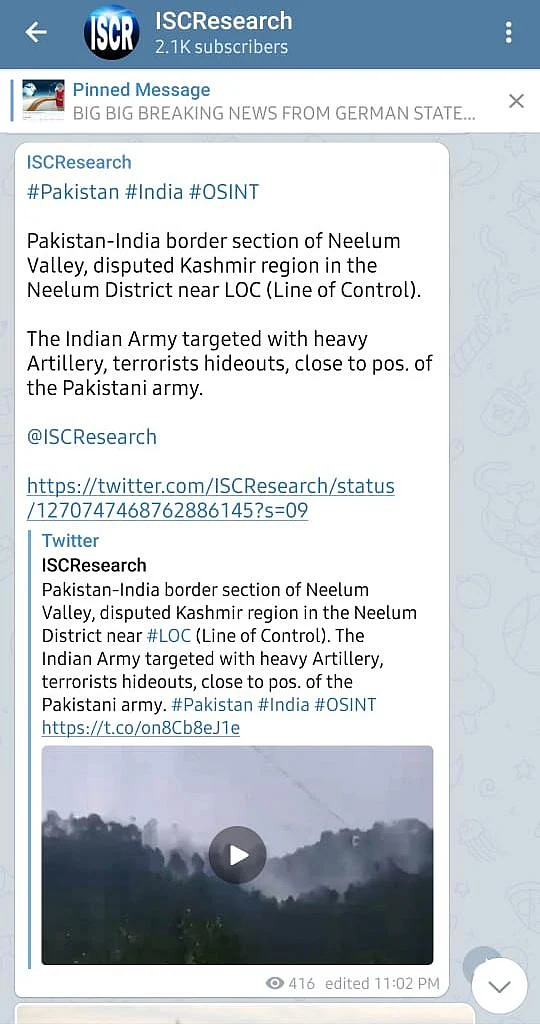You know what is common to Facebook, WhatsApp, Twitter and Telegram? They have all become breeding grounds for misinformation and conspiracy theories.
While Facebook, WhatsApp and Twitter have been under the scanner for their inability to curb this menace which has led to a string of violent activities including riots and lynchings, misinformation on Telegram is a bigger challenge often discussed in tech circles.
With over 400 million global subscribers, Telegram was introduced and is widely regarded as a competitor to WhatsApp. It can host up to 2,00,000 people in a private group as compared to 256 people allowed by WhatsApp and there are several public channels which can be accessed by anyone and everyone using the app.
Experts believe that the amplification ratio of disinformation on WhatsApp to Telegram is “625: 10,00,00,000 times”.
Perceived as one of the safest communication channels, Telegram prevents data breach to a great extent, but these features namely — high broadcast potential, robust security apparatus and unchecked public groups — make it extremely difficult to monitor the flow of mis/disinformation and hate speech on the platform.
We spoke to several experts who underlined the need to protect the privacy of the user and simultaneously introduce features which can check the spread of hate and fake news.
For the purpose of the story, this reporter joined a few public Telegram groups (random selection) and analysed the content which was being shared. Here's what I learnt.
Hate Speech, Polarisation & Disinformation: What’s Happening Inside Telegram Groups in India?
“हिंदू एकता जिंदाबाद” (Long Live Hindu Unity) is a public group which had over 22,000 members at the time of filing this report. We noticed that members in this group frequently engaged with Islamophobic, anti-minority and abusive content and used misleading information to back their claims.
Sample this conversation among three people – called ‘A’, ‘B’ and ‘C’ through the course of this story – illustrated in the screenshot below.
After ‘A’ abuses Muslims, ‘B’ points out that the “Sanatan dharma does not allow them to abuse another religion”. Adding to what ‘A’ said, person ‘C’ claims that “Seculars are traitors and should be considered worst than Muslims”.
The matter has now become ‘A’ and ‘C’ vs ‘B’.
Responding to ‘C’, person ‘B’ says that “Muslims and Christians might’ve done horrible things to Hindus, but if Hindus reciprocate in the same language, they have no right to call themselves followers of Lord Ram.”
Clearly frustrated with what ‘B’ is saying, ‘A’ ends up calling ‘B’ a “Katua”, an often-used derogatory term for Muslims.
These vile and hateful messages are often accompanied by or result from misleading or fake information targeting the minority communities. In this case, the bone of contention was the ‘UPSC Jihad’ episode aired on Sudarshan News on 11 September.
The bulletin helmed by channel’s editor in chief Suresh Chavhanke talked about how the public service exam was structured and, according to him, is functioning in a way that favoured the Muslim community. Screenshots of some false claims made by Chavhanke during the episode were then circulated on this group. These claims have already been debunked by The Quint.
This is just one of the many instances where hate speech coupled with disinformation was being circulated on this group without any verification.
We spoke with senior journalist Maya Mirchandani who is currently a Senior Fellow at the Delhi-based Observer Research Foundation. She says that disinformation in itself is not a new problem but the need of the hour is to identify the enemy. Mirchandani is leading a research on Preventing and Countering Violent Extremism’ (P/CVE), De-radicalization and Hate Speech at ORF.
“The problem today is the speed at which technology is able to amplify rumours. The ability to do so, unchecked, is the real problem. We as consumers of technology need an education – on its obstacles and propensity for abuse.”Maya Mirchandani, Journalist & Senior Fellow at ORF
We analysed several other groups and were able to sort the disinformation being shared on Telegram into three broad categories:
- Communal disinformation targeting minorities.
- Disinformation around national security and situation along the India-China border.
- Darkweb activities including pirated content, fake sim cards and breached data.
Fake News Targeting Minorities
As is evident from the example illustrated above, fake news targeting the minority communities exists in abundance on Telegram. ‘हिंदू राष्ट्रवादी’ (Hindu Nationalist), ‘BHARATIYA HINDU PARIVAR’ and ‘Hindu’ are among many other such groups where hateful and misleading content is shared on a regular basis. This includes fake news stories which have already been debunked by various fact-checkers.
For example, a viral image claiming that an RSS worker was beaten up in Kerala for attending a Muslim wedding, made its way through to one of these groups. In reality, the man seen in the images is actor and content creator Arjun Ratan and the scene is from a video ‘Smile Please’ uploaded on a digital platform called Karikku. This claim was also debunked by multiple fact-checkers including The Quint’s WebQoof team.
Intelligence- & Security-Related Misinformation
As the situation between India and China remains tense along the Line of Actual Control (LAC), we observed that multiple groups claiming to be managed by ‘Open Source Intelligence (OSINT) experts’ are broadcasting misleading information to their subscribers. We analysed the content posted by one such group called ‘ISC Research’ and found out that information which has already been debunked by fact-checkers was rampant in this group.
For example, early in September, several news channels broadcast visuals from a cemetery in China to claim that it shows the graves of the Chinese troops killed in the Galwan valley face-off. In this report, The Quint illustrated how these claims are false and the visuals which were aired date back to 2011 and 2019. We found that these visuals were shared by the admin on the ISC Research group with a similar misleading claim.
Darkweb Activites
Telegram is increasingly becoming the hub of darkweb activities. One can get anything ranging from fake sim cards, pirated films, digital counterfeits and even breached data through illegal channels on Telegram.
Banned torrent websites which facilitated the illegal distribution of copyrighted material are active on Telegram with many of their public channels having as many as 7,00,000 subscribers.
“Telegram is becoming the app of choice for criminals in the backend,” said Nandkishore Harikumar, Founder and CEO of Technisanct, an AI-based cybersecurity and Big Data start-up.
He further added, “There are a lot of groups involved in illegal activities which operate on Telegram. These are region oriented. We have assessed and found a lot of traded accounts from Gaana, Alt Balaji, Amazon Prime and Netflix on these groups. There are a lot of carding forums that use stolen credit cards to ship products from e-commerce portals.”
What Makes Telegram Vulnerable to Disinformation?
Before we dive in to understand the features of Telegram and what makes it vulnerable to the spread of disinformation, let’s begin by busting a popular social media myth which states that Telegram was ‘made in India’. It wasn’t. Telegram was co-founded by two Russian brothers Pavel Durov and Nikolai Durov in 2013. It is a cloud-based mobile and desktop instant messaging app which provides end-to-end encryption. It must be noted that encryption in Telegram is not by default and one needs to enable the ‘secret chat’ feature to avail end-to-end encryption.
While we weren’t able to find a break-up of Telegram’s numbers for India on the company’s website, this report by Inc42 — a news website covering Indian start-up ecosystem — states that as of September 2019, the application had 2.9 crore active users in India.
We spoke to experts and found out that among the features which distinguish Telegram from other private messaging apps and at the same time make it more vulnerable to attack by malicious elements are:
- Tough security features
- High broadcast potential
- Unchecked public groups
Shesh Sarangdhar, CEO of Seclabs and Systems — a global Information security assessment firm — feels that it’s a double-edged sword as although Telegram prevents privacy breach to a great extent, the platform hasn’t employed a lot of mechanisms to ensure that the source of disinformation is trackable.
“There are a couple of factors which make Telegram more vulnerable to the spread of disinformation. First is the base at which information is spread. The maximum number of people allowed in a Telegram group is way more than that on other channels. Second, a message can be forwarded to almost 100 people on Telegram at once as compared to 5-6 people on WhatsApp.”Shesh Sarangdhar, CEO — Seclabs and Systems
He further added that the amplification ratio of disinformation on WhatsApp to Telegram is “625: 10,00,00,000 times”.
This means that a piece of fake news which can travel to 625 people on WhatsApp, has the ability to reach 10,00,00,000 people on Telegram.
According to Maya Mirchandani, the challenges before us are between the need to protect privacy and the right to free speech, and to ensure that violence and hatred aren’t perpetrated or perpetuated.
“Privacy is our right, encryption enables that. When the law is violated, legal procedure must be followed to access material that can be evidentiary. Let’s not throw the baby out with the bath water.”Maya Mirchandani, Journalist & Senior Fellow at ORF
What’s the Solution?
We reached out to Telegram to understand what the company has been doing to check the spread disinformation on the platform and found that in order to push for responsible communication, the platform has partnered with several governments to create verified channels to counter coronavirus-specific misinformation.
“In one of the recent examples, Telegram as a responsible communication platform associated with the Government of India in order to create a verified Channel called MyGov Corona Newsdesk. This Channel was developed with an aim to curb fake news and misinformation spreading related to COVID-19 and has more than 2.7 million subscribers at the moment,” a Telegram spokesperson said.
In addition to this, Telegram unlike WhatsApp, allows the users to track the source of a forwarded message. Telegram is also capable of taking down illegal content after processing take-down requests from third parties. For example, it can take down sticker sets that violate intellectual property rights or porn bots.
In 2017, Telegram took down several channels run by extremist outfits in Indonesia after the government threatened to block the application across the country.
Apart from Indonesia, other countries like Iran, Russia, as well as India, have toyed with the idea of blocking the platform after it was reported that it is being extensively used by terrorist organisations including the ISIS.
Talking about Telegram’s use as a propaganda tool by terror outfits, Nandkishore Harikumar pointed out that while the platform proactively monitors these channels now, many such groups still exist and relay disinformation to the users.
“From ISIS to their terror outfits focusing on Kashmir, many such groups are regularly using Telegram as a propaganda channel. But since few years Telegram is proactively monitoring these groups and in some cases is even taking them down. Still many such channels remain uninhibited.”Nandkishore Harikumar, Founder & CEO — Technisanct
In what she thinks can help tackle the problem of striking the balance between the right to privacy and curbing the spread of disinformation, Maya Mirchandani suggests that companies have to be open to outside scrutiny and ombudsman of some kind who will determine where the lines have been crossed because “we as the public can trust neither companies nor governments to do so objectively”.
Fake news can be fatal and we’ve seen that in case of platforms like Facebook and WhatsApp. The challenge being faced by Telegram today oscillates between balancing the right to privacy and the need to safeguard users against propaganda and disinformation. The platform needs to come up with effective solutions and needs to do it fast before that viral piece of fake news finds a new target.
(Editor's Note: The story has been updated with a response from Telegram.)
(Not convinced of a post or information you came across online and want it verified? Send us the details on WhatsApp at 9643651818, or e-mail it to us at webqoof@thequint.com and we'll fact-check it for you. You can also read all our fact-checked stories here.)
(At The Quint, we question everything. Play an active role in shaping our journalism by becoming a member today.)










